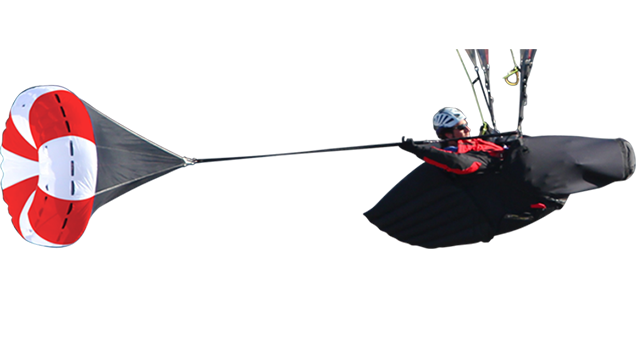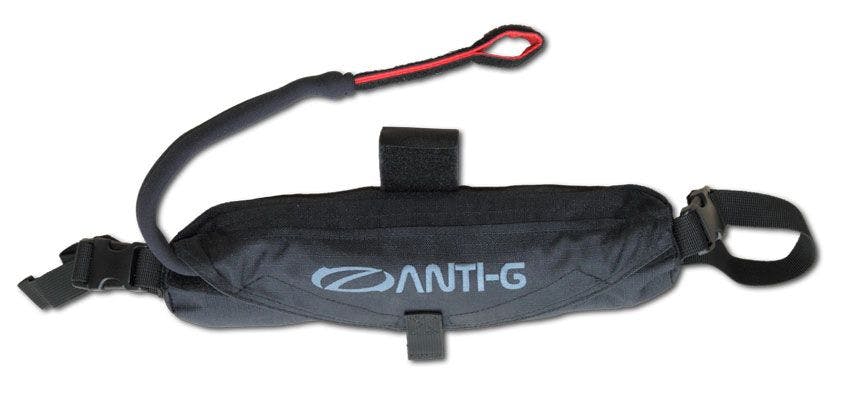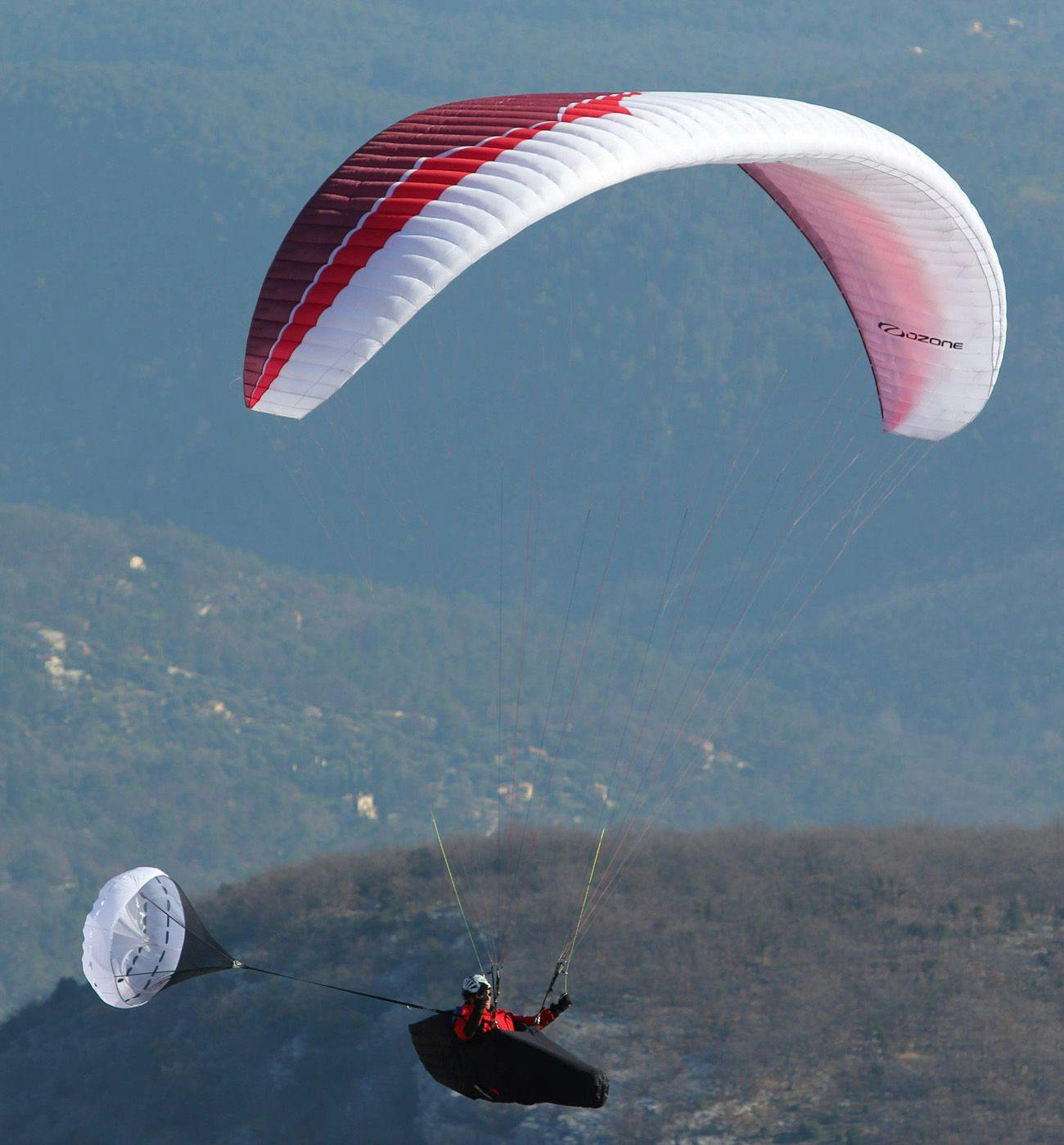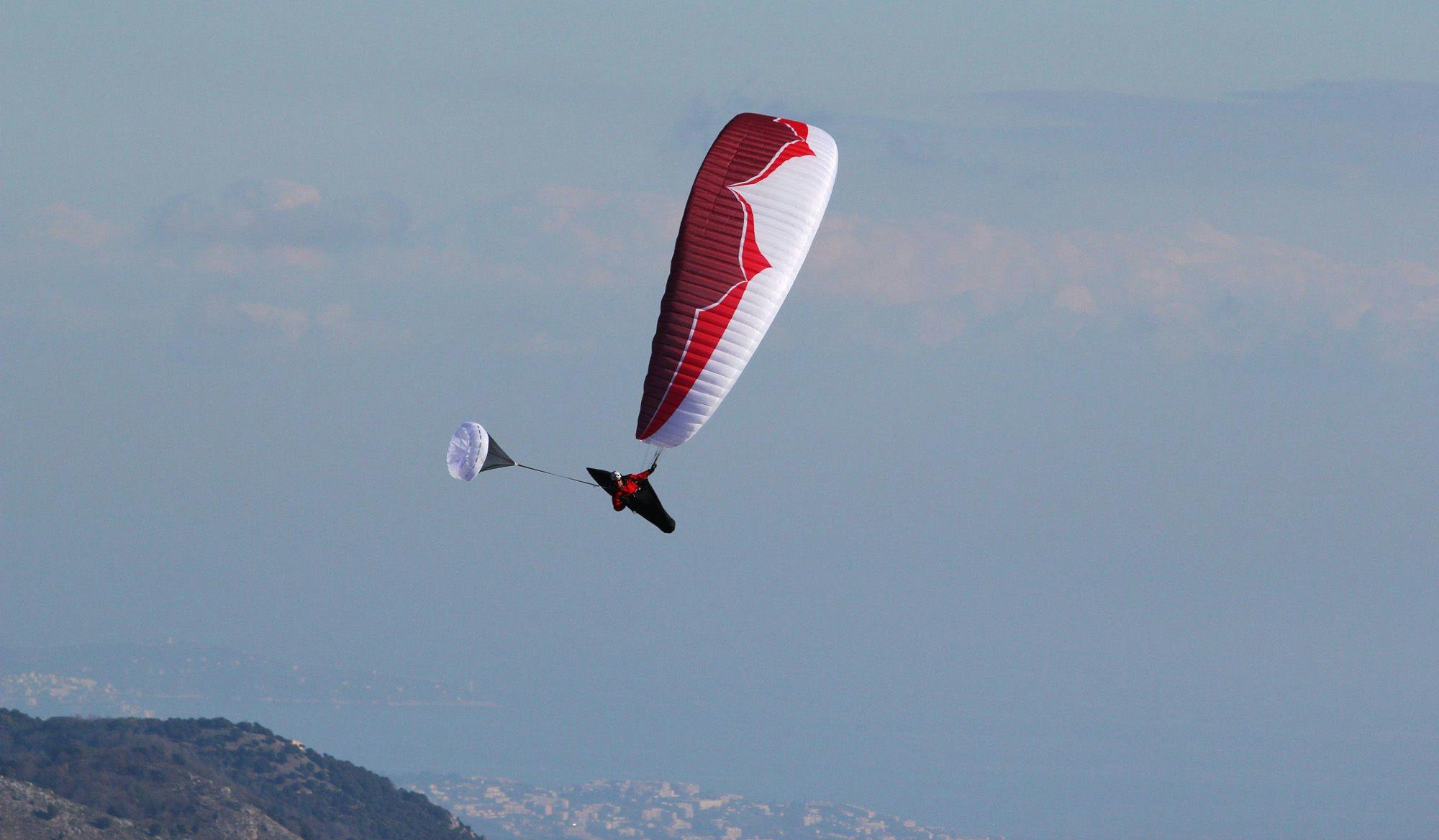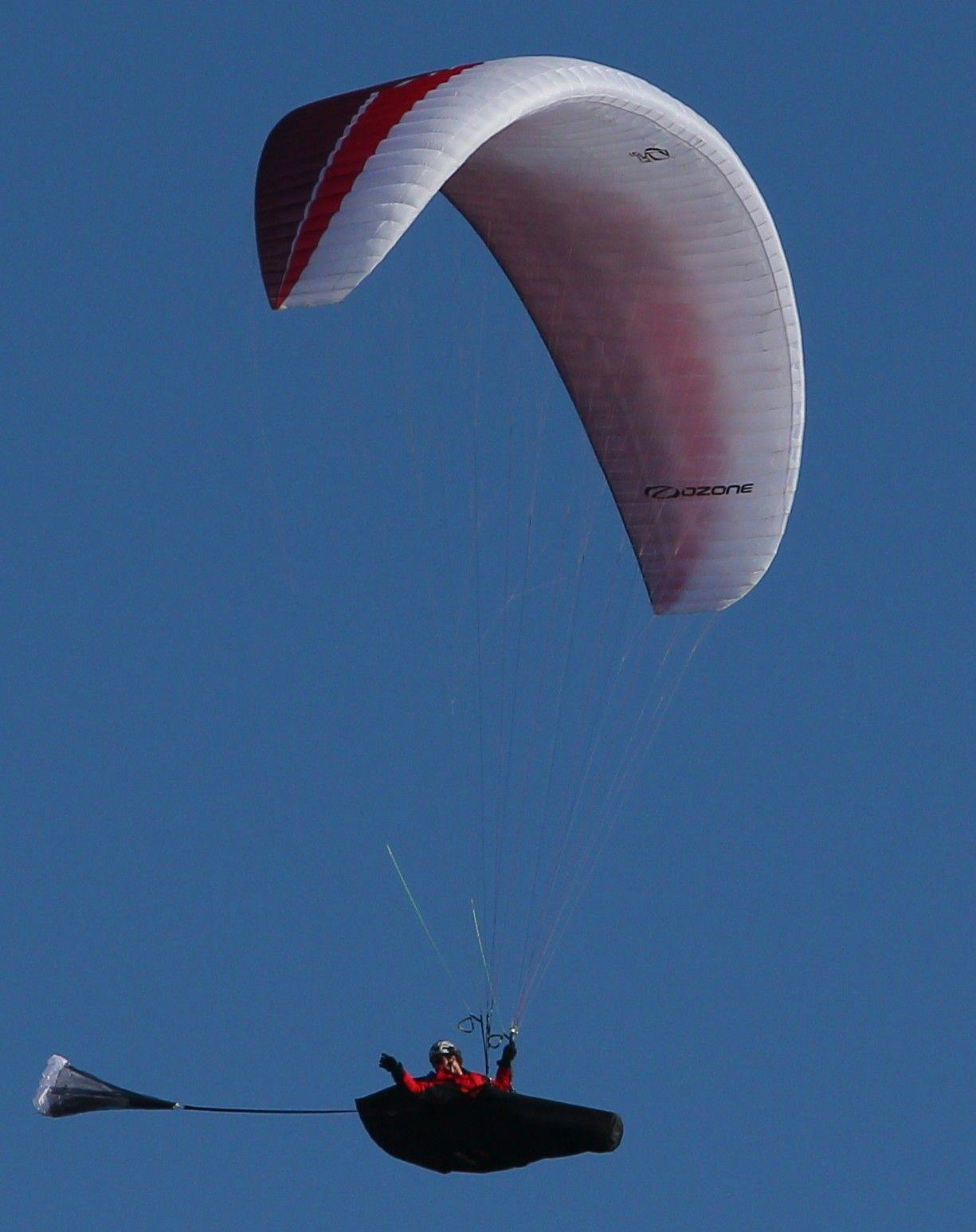Paragliders

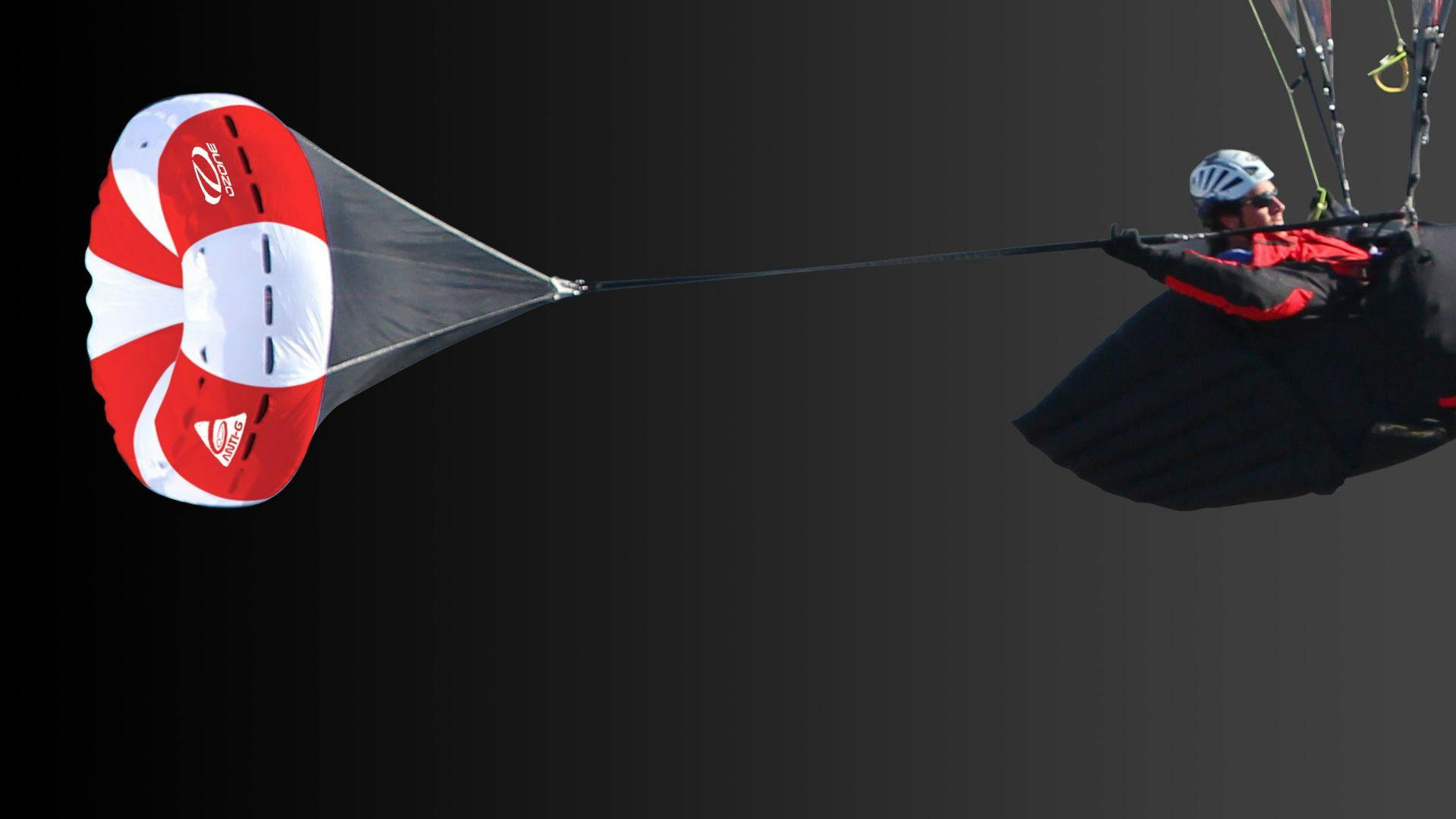
Intended primarily for use by competition pilots and pilots of high aspect ratio wings.
Product Info
Hattest du jemals einen Blackout während einer Steilspirale? Oder hast du dich vielleicht noch gar nicht getraut, eine richtige Steilspirale zu fliegen? Auch wenn du zu hart spiralt bist oder nicht hart genug, das Anti-G wird dein Leben als Pilot verändern – und zwar zum Besseren. Einfach ausgedrückt ist das Anti-G ein Behelf, der die G Kräfte beim Abspiralen verringert. Es ist simpel und einfach zu handhaben, und ist besonders effektiv bei Schirmen mit einer höheren Streckung.
- Für Wettkampfpiloten und Piloten eines Schirmes mit großer Streckung
- Das Anti-G ist einfach im Gebrauch, darf aber nur in der angegebenen Weise benutzt werden. Die Gebrauchsanweisung muss erst sorgfältig gelesen und verstanden werden, ehe das Anti-G im Flug eingesetzt wird.
- Das Anti-G kann zu einem so kleinen Beutel zusammengepackt werden, der sogar noch kleiner ist, als die meisten Cockpits. Es kann mit jedem Gurtzeug benutzt werden.
Das Anti-G ist am Hauptaufhängepunkt deines Gurtzeuges befestigt, und zwar an der jeweiligen Seite, die du nach unten spiralen möchtest. Entfalte einfach das Anti-G und leite deine Spirale ein wie üblich. Du kannst ganz normal abspiralen, wirst dabei aber weniger Umdrehungen machen während du gleichzeitig eine höhere Sinkgeschwindigkeit erreichst und sehr viel niedrigere G-Kräfte auf dich einwirken. Die meisten Piloten werden durch das Anti-G einen massiven Rückgang der G-Kräfte um 40 % erfahren.
Der Gebrauch des Anti-G wird dir erlauben, eine höhere Sinkgeschwindigkeit in deiner Spirale zu erreichen, und das – wegen der reduzierten G-Kräfte – mit größerer situationsbezogener Bewusstheit. Außerdem bedeuten geringere G-Kräfte auch weniger Beanspruchung deines Schirmes und der Leinen. Mit dem geöffneten Anti-G während des Normalfluges wirst du keine nennenswerte Störung oder den Druck zum Gieren auf dein Gurtzeug bei Trimmgeschwindigkeit bemerken.*
Du kannst die Spirale als Abstiegshilfe nutzen und dann mit dem geöffneten Anti-G ganz normal landen. Das Anti-G verfügt über eine „Kill Leine“, womit es während des Fluges ganz einfach deaktiviert werden kann. Wir empfehlen dieses Hilfsmittel besonders allen Wettkampfpiloten, egal welchen Gleitschirm sie fliegen. Wegen der hohen Effizienz einiger Schirme (besonders die Flügel der Mantra und Mantra R Serie) ist es schwierig, per Steilspirale effektiv abzusteigen ohne dabei exzessiven G-Kräften ausgesetzt zu sein. Das Anti-G ermöglicht ein sehr steiles Absteigen mit hoher Sinkgeschwindigkeit bei niedrigen Gs – und das für alle Schirme, egal von welcher Marke. Solltest du gerade dabei sein, dir einen R11 zu bestellen, dann ist das eine gute Gelegenheit, das Anti-G gleich mit zu ordern.
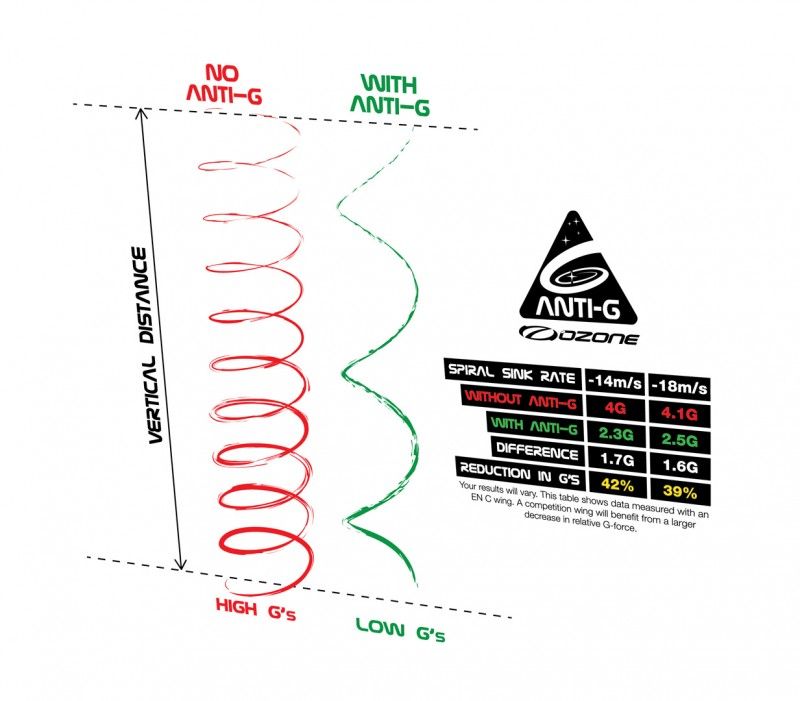
*das Anti-G ist nicht dazu gedacht um in einer kürzeren als der normalen Distanz zu landen. Vielmehr ist soll es die G-Kräfte einer Spirale reduzieren.
ANTI-G FREQUENTLY ASKED QUESTIONS
Why is the Anti-G attached asymmetrically (on one side only)?
The Anti-G is attached to only one side so that it can be used with any type of harness. Also, it is designed for use in a spiral which is an asymmetric manouvre to begin with. During the spiral, the Anti-G is attached to the inside riser.
With the Anti-G deployed, is my wing closer to stall, collapse, or spin?
Because the Anti-G is attached to the carabiner, it is very close to the center of gravity of your system (wing + pilot). Therefore, it does not influence the pitch stability of your wing. To prove that point – if the Anti-G were positioned higher, for instance mid-way up your lines, it would exert a rearward force on the glider, giving it a stall tendency.
We could say that the wing doesn’t “feel” your Anti-G, it is only your glide ration which suffers; the Anti-G does not change your pitch equilibrium. The same logic applies while in spiral, and the Anti-G does not cause any spin tendency.
However, the Anti-G does add a very slight yaw asymmetry at trim speed, and a more noticeable asymmetry in accelerated flight.
Does my wing have the same behavior in spiral with the Anti-G?
Yes, all of our testing has shown that a wing’s behavior in spiral (stable or instable) does not change with the Anti-G added.
What about the Anti-G in straight and level flight?
The Anti-G serves no purpose in straight flight. With only 1.2m of surface area, it is too small to create significant drag at trim speed. For instance, it would not help you to land in a shorter distance – for such an application, the Anti-G is far less effective than the appropriate use of your brakes.
During a spiral, the Anti-G’s effectiveness is multiplied by a factor of 10 due to the increase in airspeed and the fact that drag is proportionate to speed. We do not recommend using the Anti-G as a landing approach tool, in addition to it being ineffective, it may also disturb your standard approach patterns.
Can the Anti-G be retracted and re-used in flight?
While it is possible to reuse the Anti-G multiple times during a flight, OZONE does not recommend it. If the pilot retracts the Anti-G in flight, there is a danger of sudden re-inflation in the relative airflow. If the Anti-G re-inflates close to the pilot, it may cause the parachute to obscure the pilot’s view or reduce the pilot’s capability to control his/her wing. We recommend that pilots use the Anti-G for one descent only, then disable it with the kill-line before landing. Each pilot must make his or her own decision as to what is safe and comfortable for them in each situation. You are responsible.
Can the Anti-G benefit the lifespan of my equipment?
Yes, because it greatly reduces the amount of G-Force. The number of Gs is directly proportional to the stress applied to the structure of your wing. Your wing suffers less loading when spiraled with the Anti-G.
What purpose does the shrink tab on the inside of the container serve?
This helps to keep the red stuff sack on the interior of the container in order to prevent it from inflating in the relative wind during flight and disturbing the pilot.
The container is too small!
Your Anti-G spends more time folded in your harness than it does inflated behind you, and for this reason it should take up the least amount of space possible in your harness. The container is designed to receive a properly folded Anti-G. Read the manual, and after one or two practice folds you will realize that it is very easy to put the Anti-G back into its container.
What side do I attach it to?
- The inside of the spiral turn (spiraling left, attach it left side, and vice versa).
- The side opposite to your reserve parachute (in case of the unlikely event that you would need to deploy your reserve while the Anti-G is in use).
My Harness has a “drag chute” attachment point on the shoulder. Should I use that for the Anti-G?
No. We recommend that you attach the Anti-G to your carabiner as shown in the user manual only.
I tried to pull my Anti-G back on board and it re-inflated while I was trying to pull it in!
First of all, we don’t recommend that you do this. If you find yourself in a situation where it is mandatory to retrieve the Anti-G and store it for redeployment, then hold the webbing (bridle) firmly and if necessary kink it a little with your fingers to prevent the apex kill line from sliding inside the webbing.
ATTENTION:
While it is possible to reuse the Anti-G multiple times during a flight, OZONE does not recommend it. If the pilot retracts the Anti-G in flight, there is a danger of sudden re-inflation in the relative airflow. If the Anti-G re-inflates close to the pilot, it may cause the parachute to obscure the pilot’s view or reduce the pilot’s capability to control his/her wing. We recommend that pilots use the Anti-G for one descent only, then disable it with the kill-line before landing.
